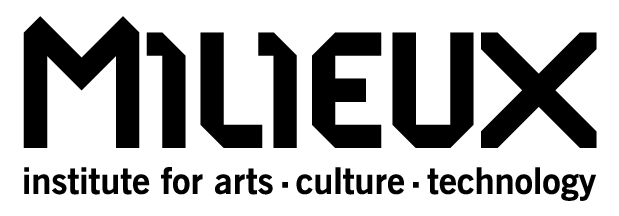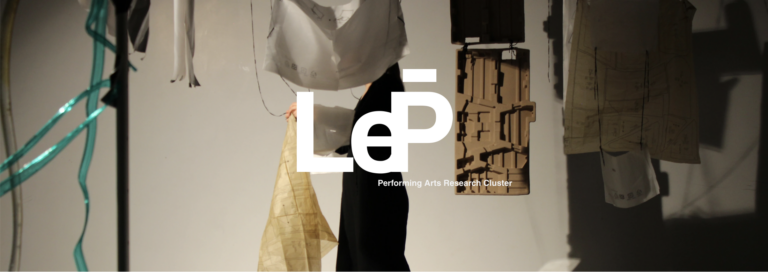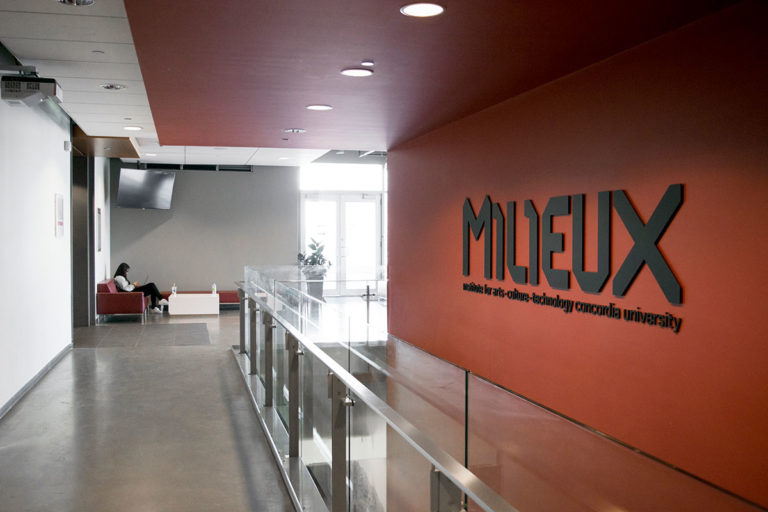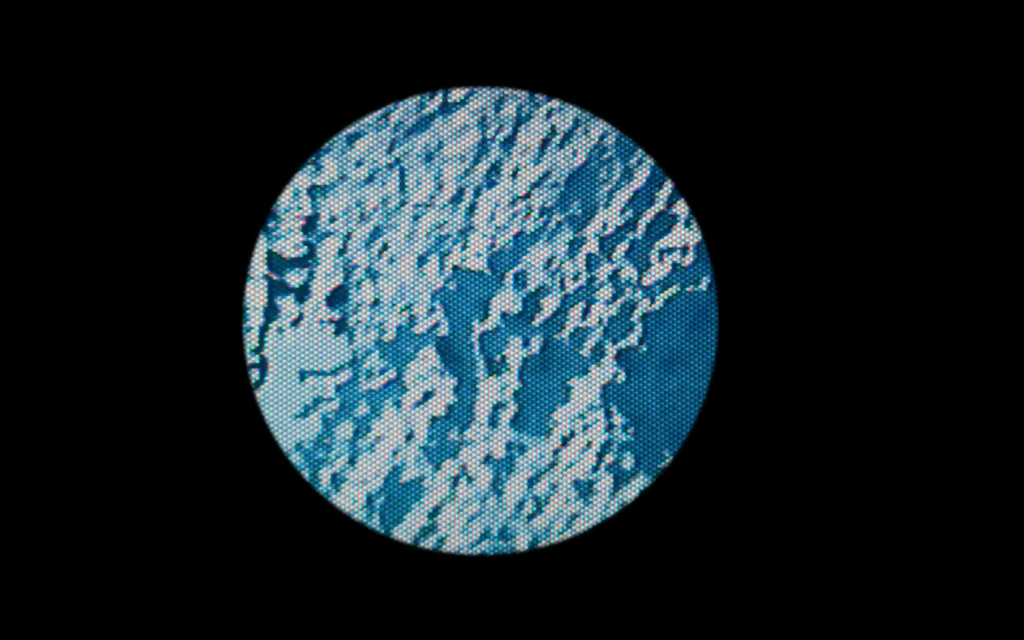
Still from Listener (Montreal GPS Data) (2018), by Kite
MANTLE, an exhibition curated by John-Elio Reitman
At Céline Bureau, from July 17 to the 28th (2021)
ARTISTS: Suzanne Kite, Max Guy, Ramona Benveniste

When I visit Mantle, an exhibition curated by John-Elio Reitman that has recently closed at Montreal’s Céline Bureau, I am first drawn to Kite‘s (Indigenous Futures) video piece, Listener (Montreal GPS Data) (2018), positioned front-centre in the garage-gallery space. It’s displayed on a Sony Trinitron CRT monitor, an identical make to one of seven I used in a recent exhibition of my own at Projet Pangée. I ask John-Elio—an illustrious artist and curator—where the CRT is from, as my reading of the work is first framed by my particular/individual experience of the monitors (difficult-to-find/cumbersome). It’s the artist’s own; after this is settled, I can go beyond the display and into the screen.
Listener is a Lakȟóta Futurism (as described by Kristina Baudemann in “Fragmentary transmissions: on the poetics, practice and futurism of Listener“), the video piece featured a fragment of the larger project that combines live performance with hair interwoven with electronic interfaces (hair being sacred to the Lakota), sonic elements such as police scanners, algorithmically rearranged poetry, and GPS information (rendered into 3D models as depicted in the first image of this article). Kite writes in their description of the work: “The future is dangerous, but as my grandfather says, spirits and ancestors are just there on the other side, trying to help. It is our responsibility to listen.”
In light of the phenomenal breadth of the work, the following seems appropriate: it is impossible to take photograph, because A. of the monitor choice and B. because the gallery abides by normative hours—the bright glare of the sun blows up the image, flattens it out. I move closer, and cup my face to the curved screen to see better, and get to see so much more.
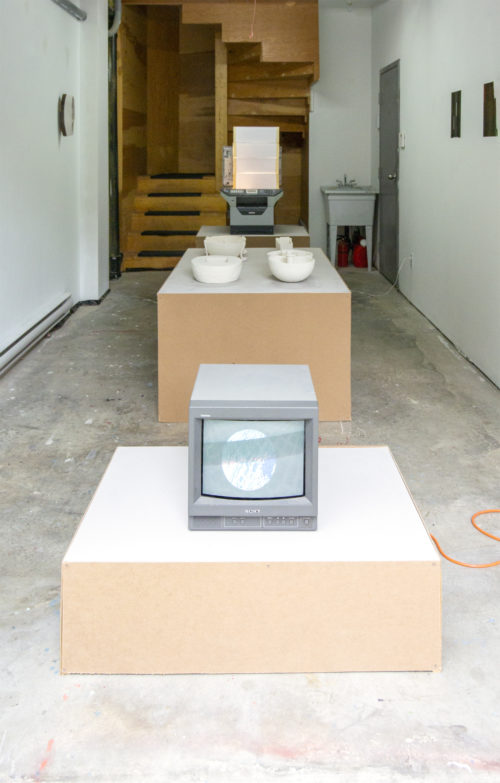
Mantle features the video work by Kite, scanned images and a scanner sculpture by Max Guy and delectable ceramics by Ramona Benveniste, Reitman’s mother; the mention of parenthood is important, in terms of lineage (vertical/arboreous) and interconnectivity (vertical, horizontal, diagonal, rhizomatic). I trace the line back to the beginning of this text, where I navigated the space based on my own past navigations, and I think of Spinoza’s Ethics. In the section Of the Mind, he describes our imagination’s propensity to evoke an entire network when imagining just the one thing—no thought/object exists or persists in the vacuum (we know how he/Nature feels about those).
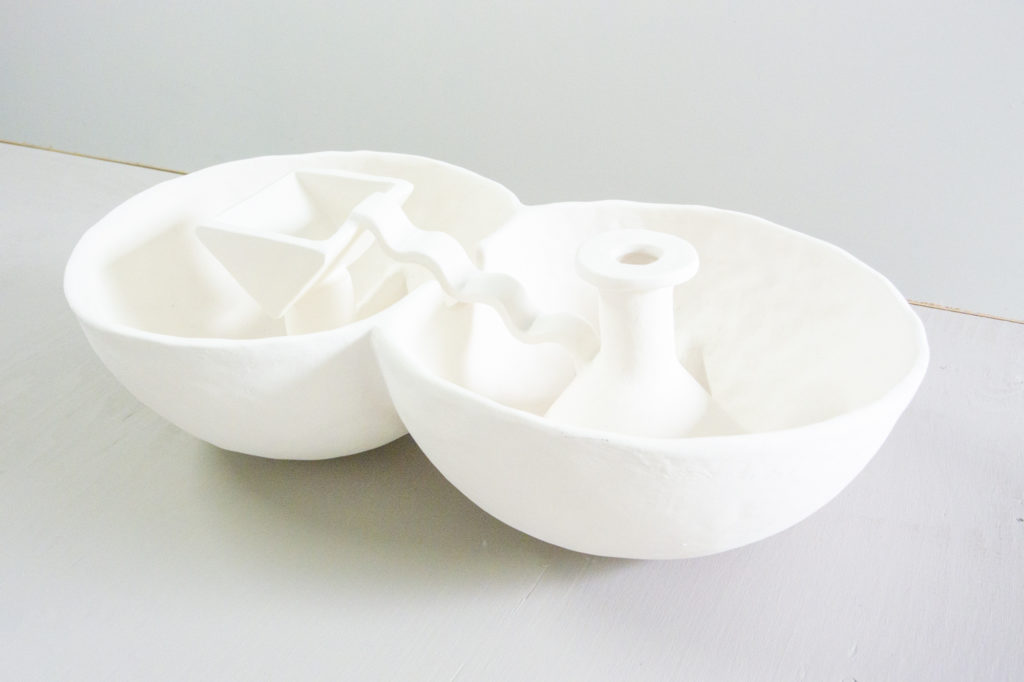
Interconnectivity is present in the multivalent definitions of the exhibition’s title:
1. a cloak (invisibility, patchwork, etc.),
2. a shell or cover—enveloppe, barnacle, hearth (denoting the home, denoting a place of belonging/familiarity/recognition),
3. the upper back of a bird (specific),
4. a lacy hood or sheath of some REFRACTORY material (like the CRT, like listening, like sound, bombé and spreading forth, pinning and ping-ponging) that gives light by incandescence when placed over a flame (the hot kiln birthing the many bulbous shapes of Benveniste), and
5. the part of the Earth that lies beneath the crust and above the central core—tantalizing proximity to the absolutely fieriest in (our) Nature.
By this fire, by these many lights—of the cathode ray, the kiln, the scanner bed—we are guided through the exhibition, and Mantle hugs us tight like the warmest and heaviest of coats.
